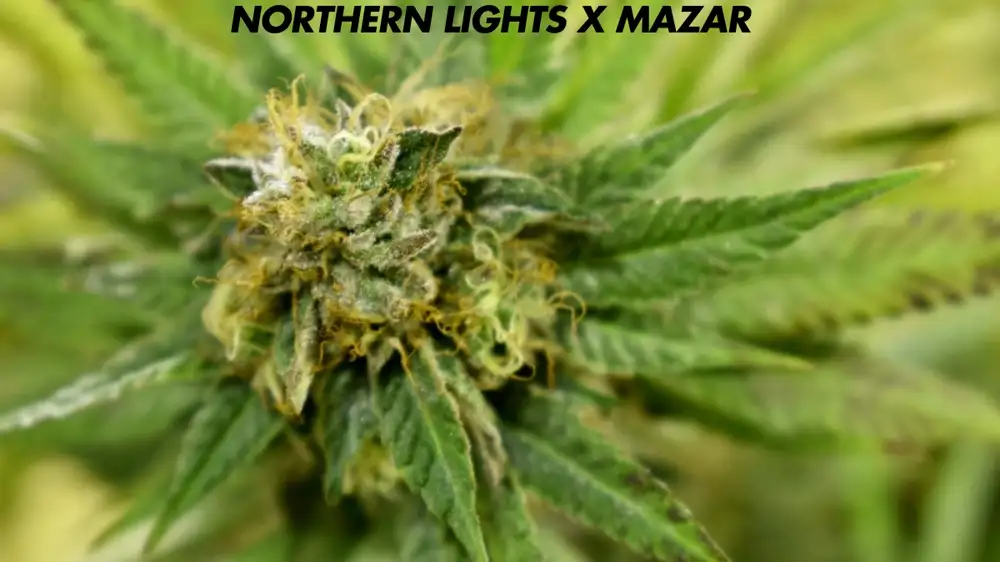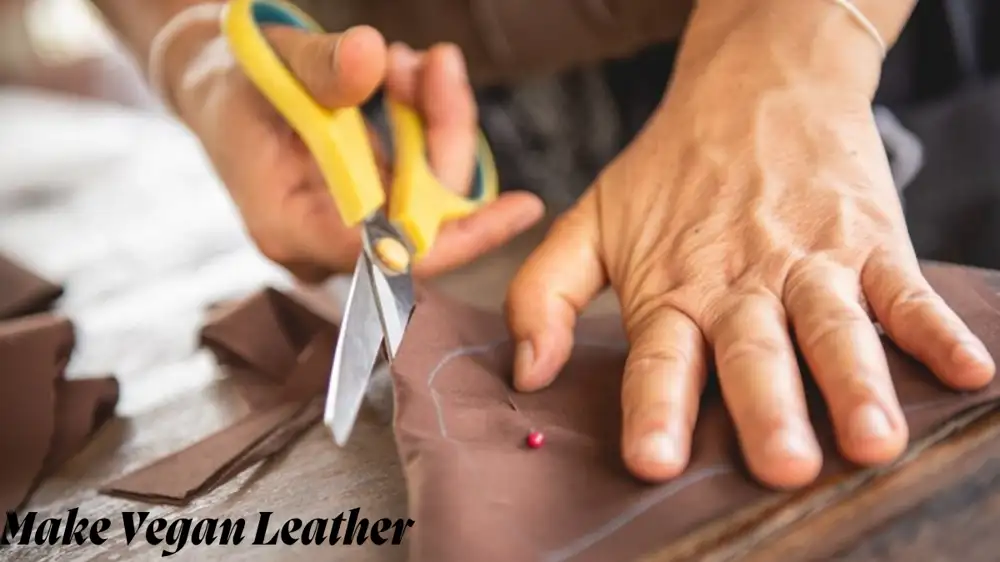Blog
Northern Lights X Mazar: A Powerful Hybrid with Rich Genetics and Relaxing Effects

When it comes to the world of cannabis, hybrid strains are some of the most exciting and sought-after. One such strain that has captured the attention of cannabis enthusiasts and growers alike is Northern Lights X Mazar. This hybrid brings together the best qualities of two legendary strains, Northern Lights and Mazar, to create a unique and potent cannabis experience. Whether you’re a seasoned smoker or a curious beginner, understanding the background, effects, and cultivation tips of this strain can help you fully appreciate what it has to offer. In this article, we’ll dive deep into the Northern Lights X Mazar, exploring its genetics, effects, medicinal benefits, and more.
The Genetics Behind Northern Lights X Mazar
To fully appreciate Northern Lights X Mazar, it’s important to understand its parent strains. This hybrid combines two iconic strains: Northern Lights and Mazar, each with its own distinct characteristics.
1. Northern Lights
The Northern Lights strain is one of the most famous and enduring cannabis varieties in the world. Originating in the 1970s, Northern Lights is an Indica-dominant strain known for its powerful relaxing effects and high resin production. It has been the foundation for numerous hybrid strains, contributing to its reputation as a top-tier cannabis variety.
Key features of Northern Lights include:
- Indica-dominant genetics (approximately 90% Indica and 10% Sativa).
- a pleasant, earthy scent with citrus and pine undertones.
- Relaxing, sedative effects, making it a go-to choice for evening use.
2. Mazar
On the other hand, Mazar is another classic strain, known for its resilience and strong, consistent effects. Mazar is often classified as a hybrid, but it tends to lean towards the Indica side. Its origins can be traced back to the Afghan and Skunk strains, which are both well-known for their robust growing characteristics and potent effects.
Key features of Mazar include:
- Afghan genetics that provide heavy, calming effects.
- A musky, earthy aroma, sometimes with sweet undertones.
- A balanced mix of relaxation and euphoria, offering a physical high without being overly sedating.
3. Northern Lights X Mazar: The Hybrid
By crossing Northern Lights and Mazar, breeders aimed to create a hybrid that would offer the best of both worlds. The result is a hybrid that is predominantly Indica, though it retains some Sativa qualities. It carries the relaxing, sedative effects of its Indica parent while also maintaining a certain level of euphoria and uplifting mental clarity from its Mazar lineage. The combination of these two legendary strains results in a powerful and balanced hybrid that appeals to both recreational users and medical patients.
Characteristics of Northern Lights X Mazar
1. Appearance and Bud Structure
Northern Lights X Mazar buds are dense and often have a slightly larger structure compared to other hybrid strains. The buds tend to have a deep green color, with hints of purple in cooler growing conditions. Usually, a thick layer of trichomes covers these buds, giving them a frosty look. The pistils, which are the hair-like structures that emerge from the buds, are usually orange or red, creating a striking contrast against the green and purple hues.
2. Aroma and Flavor Profile
Due to its Northern Lights and Mazar ancestry, Northern Lights X Mazar has a lovely blend of earthy, piney, and sweet overtones in its scent. You may notice a musky undertone along with hints of citrus or skunk when the buds are broken apart. The flavor profile is similarly earthy with a subtle sweetness that comes through when smoked or vaporized.
Many users appreciate the smoothness of the smoke, which is often described as being gentle on the throat. There may also be a slight spice or herbal aftertaste that lingers, adding to the complexity of the experience.
3. THC and CBD Content
Northern Lights X Mazar is a potent strain, with THC levels generally ranging from 18% to 22%, making it a strong choice for both recreational and medicinal users. However, the strain’s CBD content is typically low, often below 1%. This makes it more suitable for users who are seeking the psychoactive effects of THC rather than therapeutic benefits from CBD.
4. Effects of Northern Lights X Mazar
The effects of Northern Lights X Mazar can vary slightly depending on the specific phenotype, but the general experience is a balanced blend of relaxation and euphoria. Here’s what you can expect:
Physical Effects:
As an Indica-dominant hybrid, the physical effects of Northern Lights X Mazar are deeply relaxing. Many users report feeling a sense of muscle relaxation and sedation. This makes it an excellent choice for evening use or for those who struggle with sleep issues.
Mental Effects:
Unlike some heavily Indica strains that can leave you feeling foggy or lethargic, Northern Lights X Mazar has a surprising level of mental clarity. The Mazar influence brings a mild euphoria that can uplift the mood and stimulate creativity. Users often experience a sense of happiness and mental relaxation, without feeling overly “stoned.”
Duration:
The effects of this hybrid are long-lasting, often lasting 2-3 hours. While it can initially produce a head-high and mild cerebral effects, the body relaxation will take over, allowing users to unwind completely.
5. Medical Benefits of Northern Lights X Mazar
As with many Indica-dominant strains, Northern Lights X Mazar has a variety of medicinal benefits, especially for those suffering from stress, anxiety, or pain-related conditions. Here are some of the most common therapeutic uses of this strain:
Stress Relief and Anxiety:
The relaxing nature of Northern Lights X Mazar can be highly effective for individuals who suffer from stress, anxiety, or nervous tension. The physical relaxation can help reduce muscle tightness, while the euphoric mental effects can create a sense of calm.
Pain Management:
Due to its calming effects, Northern Lights X Mazar may be beneficial for those dealing with chronic pain, migraines, or general aches and pains. The strain’s ability to relax the muscles and ease tension in the body makes it a popular choice for pain relief.
Sleep Disorders:
Given the strain’s sedative qualities, it’s an excellent option for individuals who suffer from insomnia or other sleep disorders. The relaxing body effects help prepare the body for rest, while the calming mental effects can prevent racing thoughts that might keep you awake.
Appetite Stimulation:
Like many cannabis strains, Northern Lights X Mazar has been reported to stimulate appetite. This can be beneficial for those undergoing chemotherapy or other treatments that reduce appetite, as well as for individuals who struggle with eating disorders.
Growing Northern Lights X Mazar
For those interested in cultivating Northern Lights X Mazar, it’s important to know that this strain is relatively easy to grow, making it a good choice for both beginners and experienced growers. Here’s a brief overview of what to anticipate:
1. Indoor vs. Outdoor Growth
Northern Lights X Mazar can be grown both indoors and outdoors, though it tends to thrive in a controlled indoor environment. If growing outdoors, it performs best in Mediterranean or warm climates.
2. Flowering Time
The flowering time for Northern Lights X Mazar typically falls between 8 to 9 weeks, which is relatively short for an Indica-dominant hybrid. This makes it an appealing choice for growers looking to maximize yield in a shorter period of time.
3. Yield
When grown properly, Northern Lights X Mazar can produce moderate to high yields, with plants reaching around 400-500 grams per square meter indoors. Outdoor growers can expect similar yields, depending on the climate and growing conditions.
4. Climate and Care
This strain enjoys a dry, temperate climate, and it’s important to ensure that it’s not exposed to excessive humidity, as this can promote mold growth. Regular pruning and maintenance will help the plant thrive and maximize its potential yield.
5 FAQs About Northern Lights X Mazar: Everything You Need to Know
Here are five frequently asked questions about Northern Lights X Mazar, a powerful hybrid strain. Whether you’re new to cannabis or a seasoned enthusiast, these answers will help you understand more about this unique strain.
1. What is Northern Lights X Mazar?
Northern Lights X Mazar is a hybrid cannabis strain that combines the genetics of two iconic strains: Northern Lights and Mazar. It is an Indica-dominant hybrid known for its relaxing, sedative effects with a mild cerebral uplift. This strain brings together the best traits of its parent strains, offering users both physical relaxation and mental clarity, making it popular for both recreational and medicinal use.
2. What are the effects of Northern Lights X Mazar?
The effects of Northern Lights X Mazar are well-balanced. Physically, it induces muscle relaxation and a sedative effect, which makes it ideal for evening use or those seeking relief from physical discomfort. Mentally, it provides mild euphoria and clarity, helping to reduce stress and anxiety without causing excessive sedation or a “cloudy” feeling. The effects usually last for about 2-3 hours.
3. What medicinal benefits does Northern Lights X Mazar offer?
Northern Lights X Mazar is beneficial for a variety of medical conditions due to its relaxing and calming properties. It is commonly used for:
- Stress and Anxiety Relief: Helps ease nervous tension and provides mental relaxation.
- Pain Relief: Useful for chronic pain, muscle tension, and migraines due to its muscle-relaxing effects.
- Sleep Disorders: Its sedative qualities make it an excellent choice for individuals struggling with insomnia or restless sleep.
- Appetite Stimulation: Can help those experiencing a loss of appetite, especially during chemotherapy or illness.
4. How do I grow Northern Lights X Mazar?
Growing Northern Lights X Mazar is relatively easy, making it suitable for both beginners and experienced growers. It can be cultivated both indoors and outdoors, but it thrives in a controlled indoor environment. Key growing details include:
- Flowering Time: About 8-9 weeks.
- Yield: 400–500 grams per square meter is the typical yield when grown indoors.
- Climate: Prefers a dry, temperate climate and should be protected from high humidity to prevent mold growth.
- Care: Regular pruning and monitoring for pests will help maximize its yield.
5. What does Northern Lights X Mazar smell and taste like?
Northern Lights X Mazar has a musky, earthy aroma with hints of pine, citrus, and a subtle sweetness. The flavor is similarly earthy, with some users noting a spicy or herbal aftertaste. Overall, the strain provides a smooth smoking experience with a gentle throat hit, making it a pleasant option for those who appreciate rich, natural flavors.
Conclusion: A Strain Worth Trying
Northern Lights X Mazar is a unique and powerful hybrid that combines the best qualities of two iconic cannabis strains. Whether you’re seeking relaxation, pain relief, or mental clarity, this hybrid is a great option for both recreational and medicinal users. Its balanced effects make it suitable for various occasions, from unwinding after a long day to stimulating creativity or relieving chronic pain.
If you’re looking for a strain with rich genetics, smooth flavors, and potent effects, Northern Lights X Mazar is certainly worth trying. Whether you’re growing it yourself or purchasing from a dispensary, this hybrid has something to offer everyone—from novice users to seasoned cannabis enthusiasts.
Blog
Paper Screening Based Test Ph-V for DM (B-15) Domicile holders of Nowshera, Charsadda & Malakand District in the E&SED Khyber Pakhtunkhwa [TEST DATE: 1st June’ 2025]
Candidate’s Answer Sheet Section
PST (BPS-12), CT (BPS-15), PET (BPS-15), DM (BPS-15), TT (BS-15)
Blog
How to gain High-Value clients on LinkedIn?

Key Points
- Research suggests optimizing your LinkedIn profile and engaging with your network can help gain a clients on LinkedIn.
- It seems likely that building relationships through personalized outreach and providing value are effective strategies.
- The evidence leans toward consistency and patience being crucial for success on LinkedIn.
Optimize Your Profile
Start by ensuring your LinkedIn profile is professional and appealing. Use a clear headshot, craft a headline that highlights what you offer, and write a summary showcasing your expertise. This makes you more visible to potential clients.
Build and Engage Your Network
Connect with industry professionals and potential clients, personalizing your requests to increase acceptance. Engage by liking, commenting, and sharing their posts, and join relevant LinkedIn groups to expand your reach.
Reach Out and Provide Value
Send personalized messages to potential clients, focusing on building relationships rather than selling immediately. Share useful content, offer free resources, or host webinars to demonstrate your expertise and build trust.
Move Conversations Offline and Be Consistent
Once you’ve built rapport, suggest a call or meeting to discuss how you can help. Stay consistent with daily engagement, as gaining clients on LinkedIn takes time and persistence.
Detailed Strategies for Gaining Clients on LinkedIn
This section provides a comprehensive guide based on extensive research into LinkedIn client acquisition strategies, drawing from multiple authoritative sources. The following details expand on the key points, offering a step-by-step approach for users looking to leverage LinkedIn effectively.
Profile Optimization: The Foundation for Visibility
Your LinkedIn profile is your digital storefront, and optimizing it is critical for attracting clients. Use a professional headshot to make a strong first impression, as profiles with photos receive more views. Craft a compelling headline that clearly states your value proposition, such as “Freelance Graphic Designer Helping Brands Stand Out” rather than a generic title like “Designer.” The summary should highlight your expertise, past achievements, and what you offer, using relevant keywords to improve search visibility. For example, if you’re targeting marketing agencies, include terms like “digital marketing,” “brand strategy,” and “client growth.”
Research from Dripify: How to Get Clients From LinkedIn emphasizes using SEO techniques, such as incorporating keywords in your headline and summary, to ensure your profile appears in searches. Additional resources, such as Dripify: Improve LinkedIn Profile and Dripify: LinkedIn SEO, provide detailed tips on enhancing visibility.
Identifying and Targeting Ideal Clients
To gain clients, you must first define your ideal customer avatar. This involves identifying their industry, job titles, and pain points. For instance, if you’re a web developer, target marketing managers in e-commerce firms. Use LinkedIn’s advanced search to filter by keywords, location, and industry, and consider Boolean operators (e.g., “web development” AND “e-commerce”) for refined results, as suggested by Dripify: Boolean Search on LinkedIn.
For advanced targeting, LinkedIn Sales Navigator offers features like lead recommendations and saved leads, though it’s a paid tool. The LinkedIn Sales Blog: 7 Steps to Attract More Clients With LinkedIn recommends using Sales Navigator for criteria like title and industry, with insights from LinkedIn: How to Use Sales Navigator.
Building and Engaging Your Network
Networking is at the heart of LinkedIn client acquisition. Start by connecting with colleagues, former clients, and industry leaders, personalizing each request to increase acceptance rates. For example, mention a shared interest or connection in your message. Engage with your network by liking, commenting, and sharing their posts, which helps build rapport.
Participating in LinkedIn groups is another effective strategy. Join groups relevant to your industry, such as “Digital Marketing Professionals,” and contribute by answering questions or sharing insights. Dripify: LinkedIn Groups highlights this as a way to connect with potential clients. Additionally, publishing thought leadership content, such as LinkedIn Articles addressing audience pain points, can position you as an expert. An example is the article “5 Game-Changing Digital Marketing Strategies for Small Businesses,” as noted in Dripify: LinkedIn Articles.
Personalized Outreach and Relationship Building
Once connected, avoid the mistake of immediate pitching, which can alienate potential clients. Instead, send personalized messages that focus on building relationships. For instance, ask about their current challenges or share a relevant article. The LinkedIn Sales Blog advises speaking like a human, finding commonalities, and following advice from experts like Will Allred on communication, available at LinkedIn: Don’t Pitch and Connect.
The DigitalMarketer: Build a Steady Stream of Clients suggests a non-salesy welcome message, including a question like “Tell me something interesting about your work,” to drive engagement. This approach, informed by Ted Prodromou’s book Ultimate Guide to LinkedIn for Business, emphasizes helping without expecting immediate returns, pretending you’re at a coffee meeting.
Providing Value to Build Trust
Providing value is crucial for converting connections into clients. Share resources, guides, or e-books that address your target audience’s pain points. For example, host a webinar on “Effective Social Media Strategies for Small Businesses” to showcase your expertise. Dripify: Create Value for Customers offers ideas like sharing case studies or hosting workshops.
Engaging in conversations is also key—be proactive by offering insights on posts or articles, and ask questions to spark dialogue. This builds trust and positions you as a helpful resource, as noted in Dripify: How to Get Clients From LinkedIn.
Moving Conversations Offline and Closing Deals
After building rapport, transition relationships offline by suggesting a phone call or virtual meeting. The DigitalMarketer process includes inviting responders to a short call, asking, “Would you like my help?” at the end, and closing deals via these interactions. The LinkedIn Sales Blog emphasizes demonstrating credibility before moving offline, ensuring you’ve established value.
Leveraging Recommendations and Referrals
Recommendations enhance your profile’s credibility, making it easier to attract clients. Ask satisfied clients or colleagues for recommendations, highlighting specific projects. For example, request, “Could you recommend me based on our recent website redesign project?” Follow up with gratitude, as outlined in Dripify: LinkedIn Recommendations, which lists five steps: identify connections, personalize, highlight relationships, be specific, and express gratitude.
Additionally, leverage your existing network for referrals. Reach out to former colleagues or friends, personalizing messages to seek introductions, as suggested in Dripify: How to Get Clients From LinkedIn.
Consistency and Patience: The Long-Term Approach
Gaining clients on LinkedIn requires consistency. Dedicate 30 minutes daily to engage, as per the DigitalMarketer 8-step process, which includes connecting, messaging, and following up. The LinkedIn Sales Blog stresses building your reputation over time, with success stories like Darren McKee, who gained 1,000 followers per week by posting consistently for over 1,000 days, detailed at LinkedIn: Posted on LinkedIn 950 Days Straight.
Patience is key, as results take time. The Dripify article notes LinkedIn’s 800 million members worldwide offer immense potential, but building relationships is a gradual process.
Additional Strategies for Advanced Users
For those looking to scale, consider using LinkedIn automation tools like Dripify for connection requests and follow-ups, ensuring compliance with LinkedIn’s policies, as detailed at Dripify: LinkedIn Automation Tools. Optimize your Social Selling Index (SSI) for better performance, with tips at Dripify: LinkedIn SSI Score. Drive traffic to your website via your profile link, share content, and use LinkedIn ads for broader reach, as noted in Dripify: Increase Website Traffic Using LinkedIn.
Collaborate with influencers for guest posts or joint webinars to expand your audience, as suggested at Dripify: Digital Marketing Experts. For hidden profiles, use LinkedIn X-Ray Search, detailed at Dripify: LinkedIn X-Ray Search.
Tables: Key Strategies and Tools
Below is a table summarizing the core strategies, with corresponding tools and resources:
| Strategy | Description | Tools/Resources |
|---|---|---|
| Profile Optimization | Enhance visibility with professional photo, headline, summary, keywords. | Dripify: Improve LinkedIn Profile, Dripify: LinkedIn SEO |
| Network Building | Connect with professionals, personalize requests, engage via likes/comments. | Dripify: Self-Entrepreneur LinkedIn |
| Group Engagement | Join industry groups, participate in discussions, share expertise. | Dripify: LinkedIn Groups |
| Content Publishing | Share articles addressing pain points, engage in comments. | Dripify: LinkedIn Articles |
| Advanced Search | Use keywords, filters, Boolean operators for targeted searches. | Dripify: Boolean Search on LinkedIn |
| Sales Navigator | Advanced filters, lead recommendations, InMail for direct messaging. | Dripify: How to Use LinkedIn Sales Navigator |
| Recommendations | Request from clients, highlight projects, express gratitude. | Dripify: LinkedIn Recommendations |
| Value Provision | Share resources, host webinars, address audience challenges. | Dripify: Create Value for Customers |
Another table for daily engagement, based on the 8-step process:
| Step | Daily Action | Time Estimate |
|---|---|---|
| 1 | Identify ideal customer, use worksheet for targeting. | 5 minutes |
| 2 | Define problems you solve, focus on results. | 5 minutes |
| 3 | Optimize profile, ensure headline and summary attract clients. | 5 minutes |
| 4 | Connect, send non-salesy messages, include questions. | 5 minutes |
| 5 | Keep in touch, share relevant content every few months. | 5 minutes |
| 6 | Invite to calls, ask if they need help, close deals. | 5 minutes |
| 7 | Build authority, write recommendations, prompt reciprocation. | 5 minutes |
| 8 | Repeat steps 4-7 daily, maintain consistency. | Ongoing |
Success Stories and Statistics
Success stories underscore the potential of these strategies. Darren McKee’s consistent posting for over 1,000 days resulted in 1,000 followers per week, as detailed at LinkedIn: Posted on LinkedIn 950 Days Straight. The DigitalMarketer process helped create a six-figure business, with Ted Prodromou’s book Ultimate Guide to LinkedIn for Business providing further insights. LinkedIn’s 800 million members, as noted in Dripify, offer a vast pool for client acquisition.
Conclusion
Gaining clients on LinkedIn is a multifaceted process requiring profile optimization, targeted networking, engagement, and consistent effort. By following these strategies, users can build relationships, provide value, and ultimately secure clients, with patience being essential for long-term success.
Blog
How to Make Vegan Leather from Recycled Materials: A Step-by-Step Guide

In recent years, vegan leather has become a cruelty-free and eco-friendly alternative to traditional animal leather. But did you know you can take sustainability a step further by creating vegan leather from recycled materials? This innovative approach reduces waste, lowers carbon footprints, and empowers you to craft stylish, durable goods at home.
This guide explores simple, creative methods to make vegan leather using everyday recycled items like plastic bottles, cork, pineapple leaves, and more. Let’s dive in!
Why Choose Vegan Leather from Recycled Materials?
Traditional leather production harms the environment through deforestation, water pollution, and methane emissions from livestock. Vegan leather offers a compassionate alternative, but many store-bought options rely on synthetic plastics like PVC, which aren’t biodegradable.
By using recycled materials, you:
- Reduce landfill waste (e.g., repurposing plastic bottles or fruit scraps).
- Save resources (no need for virgin plastics or animal farming).
- Create customizable, unique textures (each material has its look and feel!).
Whether you’re a DIY enthusiast or a sustainability advocate, making vegan leather at home is a fun, impactful project.
Materials You Can Use to Make Vegan Leather
Almost any flexible, durable recycled material can become vegan leather! Here are the most popular options:
- Recycled Plastic (rPET): Plastic bottles, packaging, or old polyester fabrics.
- Cork: Wine corks, corkboard scraps, or industrial cork waste.
- Plant-Based Fibers: Pineapple leaves (Piñatex), apple peels, or mushroom mycelium.
- Upcycled Fabrics: Denim, canvas, or rubber from old tires.
Each material requires slightly different techniques. Below, we’ll break down five easy methods.
Method 1: Recycled Plastic Bottle Leather (rPET)
Materials Needed:
- Clean plastic bottles (PET)
- Scissors or craft knife
- Non-toxic adhesive (e.g., cornstarch glue)
- Baking parchment
- Iron or heat press
Steps:
- Prepare the Plastic:
Cut bottles into flat sheets. Remove labels and caps, then slice vertically. Flatten the pieces and trim the edges. - Create Layers:
Overlap plastic pieces on baking parchment. Apply adhesive between layers to bond them. - Press and Heat:
Cover with another parchment sheet. Iron at medium heat (150°C/300°F) for 10–15 seconds, applying even pressure. Repeat until layers fuse into a flexible sheet. - Finish:
Let cool. Sand edges for smoothness, or dye with natural pigments for color.
Best For: Bags, wallets, and accessories. rPET leather is water-resistant and sturdy!
Method 2: Cork Leather from Wine Corks
Materials Needed:
- Wine corks (10–15 for a small sheet)
- Food processor or grater
- Non-toxic binder (flour paste or eco-friendly glue)
- Rolling pin
- Wax paper
Steps:
- Shred the Corks:
Grate corks into fine granules using a food processor. Avoid plastic-backed corks. - Mix with Binder:
Combine cork granules with binder until it forms a dough-like consistency. - Roll and Dry:
Place the mixture between wax paper sheets. Roll flat (3–5mm thick). Air-dry for 24–48 hours. - Seal (Optional):
Brush with beeswax or linseed oil for a polished, water-resistant finish.
Best For: Notebook covers, coasters, or jewelry. Cork is lightweight and naturally textured.
Method 3: Pineapple Leaf Leather (Piñatex)
Materials Needed:
- Pineapple leaves (from 5–6 pineapples)
- Blender
- Natural dye (optional)
- Cornstarch or agar-agar (as a binder)
- Mesh screen or cloth
Steps:
- Extract Fibers:
Boil leaves for 30 minutes to soften. Scrape off pulp with a knife, revealing long fibers. Rinse and dry. - Blend and Bind:
Mix fibers with 1 cup water and 2 tbsp binder in a blender. Pour onto a mesh screen to form a thin layer. - Dry and Press:
Sun-dry for 2–3 days, pressing occasionally with a heavy book to flatten.
Best For: Shoes, belts, or upholstery. Piñatex has a rustic, fibrous appearance.
Method 4: Mushroom Leather (Mycelium)
Materials Needed:
- Mushroom mycelium starter kit (available online)
- Organic substrate (sawdust or straw)
- Baking tray
- Dehydrator or oven
Steps:
- Grow Mycelium:
Spread the substrate in a tray. Inoculate with mycelium spores. Store in a dark, humid place for 2–3 weeks. - Harvest and Press:
Once fully grown, peel the mycelium mat from the substrate. Press between boards to flatten. - Tan and Dry:
Soak in a natural tannin (like oak gall solution) for 1 hour. Dehydrate at 40°C (104°F) until leathery.
Best For: High-fashion items. Mycelium leather is biodegradable and mimics animal leather’s softness.
Method 5: Apple Peel Leather
Materials Needed:
- Apple peels (from 10–12 apples)
- Blender
- Glycerin or vegetable glycerin
- Baking sheet
Steps:
- Blend Peels:
Puree peels with 1 tbsp glycerin until smooth. - Spread and Dry:
Pour the mixture onto a baking sheet lined with parchment. Dry in sunlight or an oven at 50°C (120°F) for 8–12 hours. - Finish:
Peel off the sheet. Condition with coconut oil for flexibility.
Best For: Small accessories or decorative patches. Apple leather has a fruity scent and matte finish.
Customizing Your Vegan Leather
Make your creations stand out with these tips:
- Dyeing: Use turmeric (yellow), beet juice (pink), or spirulina (green).
- Embossing: Press leaves or lace into the material before drying.
- Stitching: Reinforce edges with upcycled thread or hemp cord.
Caring for Vegan Leather
- Cleaning: Wipe with a damp cloth. Avoid harsh chemicals.
- Storage: Keep in a cool, dry place to prevent mold.
- Repair: Patch tears with adhesive or a matching material piece.
Environmental Impact and Challenges
Pros:
- Reduces plastic and organic waste.
- Uses less water and energy than animal leather.
Cons:
- Some methods require practice to perfect.
- Plant-based leathers may be less durable than synthetics.
5 FAQs about How to Make Vegan Leather from Recycled Materials
1. Can I make vegan leather at home without specialized equipment?
Answer: Absolutely! Many methods for making vegan leather from recycled materials require only basic household items like scissors, a blender, an iron, or a baking sheet. For example, creating cork leather or apple peel leather can be done with minimal tools. While some techniques, like growing mushroom leather, may need a starter kit, most DIY vegan leather projects are beginner-friendly and don’t require expensive equipment.
2. How durable is vegan leather made from recycled materials compared to traditional leather?
Answer: The durability of vegan leather depends on the materials and methods used. For instance, recycled plastic bottle leather (rPET) is highly durable and water-resistant, making it ideal for bags and accessories. On the other hand, plant-based options like pineapple or apple leather may be softer and better suited for lightweight items. While vegan leather may not always match the longevity of traditional leather, proper care (like sealing and conditioning) can significantly extend its lifespan.
3. Is vegan leather from recycled materials biodegradable?
Answer: It depends on the materials used. Plant-based vegan leathers, such as those made from pineapple leaves, cork, or mushroom mycelium, are biodegradable and compostable. However, vegan leather made from recycled plastics (like rPET) is not biodegradable, though it still helps reduce waste by repurposing existing materials. If biodegradability is a priority, opt for natural, plant-based options.
4. Can I scale up DIY vegan leather production for small businesses?
Answer: Yes, you can! Many of the methods described in the article, such as using pineapple leaves or recycled plastics, can be scaled up with some adjustments. For example, investing in a heat press for rPET leather or a dehydrator for mushroom leather can streamline production. Additionally, sourcing bulk recycled materials and experimenting with efficient techniques can help you create consistent, high-quality vegan leather for a small business.
5. What are the best ways to dye vegan leather naturally?
Answer: Natural dyes are a great eco-friendly option for coloring vegan leather. You can use ingredients like turmeric (for yellow), beet juice (for pink), spirulina (for green), or coffee grounds (for brown). Simply mix the dye with water, apply it to the material using a brush or sponge, and let it dry. For a more vibrant color, repeat the process or add a natural fixative like vinegar. This approach is safe, sustainable, and adds a unique touch to your creations.
Final Thoughts
Creating vegan leather from recycled materials is a rewarding way to support sustainable fashion. Whether you’re crafting a wallet from plastic bottles or a chic bag from pineapple leaves, each project makes a difference. Ready to start? Gather your materials, experiment with textures, and share your creations to inspire others!
By embracing DIY vegan leather, you’re not just making accessories—you’re shaping a greener future.
Most People ask questions on Google about How to Make Vegan Leather from Recycled Materials
What is the process of making vegan leather?
Vegan leather is made without animal hides and instead uses plant-based or synthetic materials. The process varies depending on the type of material used but generally follows these steps:
- Material Sourcing – Vegan leather can be made from plants like mushrooms, pineapples, apples, cacti, or synthetic materials like polyurethane (PU).
- Processing & Treatment – Plant fibers are extracted and mixed with binders or resins to create a durable, leather-like texture. In synthetic versions, plastic is melted and spread into thin layers.
- Shaping & Drying – The material is shaped into sheets and left to dry. This stage determines its thickness and flexibility.
- Texturizing & Coloring – To mimic real leather, the material is embossed with a grain pattern and dyed using eco-friendly or synthetic dyes.
- Finishing Touches – A protective coating is applied for durability, water resistance, and longevity.
How do you make vegan plant-based leather?
Plant-based vegan leather is made using natural materials and fewer chemicals compared to synthetic alternatives. The process depends on the plant source but generally includes:
- Collection & Processing – Fruit waste (pineapple leaves, apple peels, etc.), cactus, or mushrooms are harvested and dried.
- Fiber Extraction & Blending – The plant fibers are broken down and mixed with natural binders like starch or plant-based resins to form a leather-like sheet.
- Shaping & Texturing – The material is rolled out, textured, and sometimes reinforced with fabric backings for extra strength.
- Tanning & Dyeing – The sheets are treated with natural tannins (from tree bark, for example) and dyed with plant-based or non-toxic dyes.
- Finishing – A protective, biodegradable coating is applied for durability and water resistance.
Popular plant-based vegan leathers include Piñatex (pineapple leather), Mylo (mushroom leather), and Desserto (cactus leather).
How do you recycle vegan leather?
Recycling vegan leather depends on its materials:
- Plant-based vegan leather is biodegradable, meaning it will naturally break down over time. Some types can be composted in industrial facilities.
- Synthetic vegan leather (PU, PVC) is harder to recycle due to plastic content. Some brands have take-back programs for recycling.
- Upcycling is another option—old vegan leather items can be repurposed into new accessories like wallets or keychains.
To be more eco-friendly, look for plant-based or recycled-material vegan leathers rather than plastic-based options.
What materials are used to make vegan leather?
Vegan leather is made from a variety of natural and synthetic materials, including:
🌱 Plant-Based Materials:
- Pineapple leaves (Piñatex)
- Cactus (Desserto)
- Mushrooms (Mylo)
- Apple peels
- Cork
- Banana fibers
🛠 Synthetic Materials:
- Polyurethane (PU)
- Recycled plastics (from bottles or industrial waste)
- Polyvinyl chloride (PVC) – less eco-friendly
The best vegan leathers are plant-based or made from recycled materials, as they are more sustainable than plastic-based versions.
What are the ingredients in vegan leather?
The ingredients vary depending on the type of vegan leather:
- Plant-Based Leather – Natural plant fibers, bio-based binders (like corn starch or natural resins), plant-based dyes, and protective coatings made from waxes or oils.
- Synthetic Vegan Leather – Polyurethane (PU) or PVC, plasticizers, synthetic dyes, and chemical coatings for texture and durability.
For an eco-friendly choice, look for low-plastic, biodegradable vegan leathers made from plants or recycled materials.
-

 Travel7 months ago
Travel7 months agoTop 5 Ways Stephen Revetria Elevates the U.S. Travel and Tourism Advisory Board
-

 Crypto8 months ago
Crypto8 months agoUnlock 7 Powerful Cryptocurrency Insights: Delving into NewzNav.com’s Crypto Archives
-

 Technology8 months ago
Technology8 months agoHydrogen Water Machines: Revolutionizing Hydration and Wellness
-

 NEWS & Society8 months ago
NEWS & Society8 months agoChurch of the Holy Spirit News: Events & Impact
-

 Games8 months ago
Games8 months agoDownload Tekken 6 PC: A Comprehensive Resource
